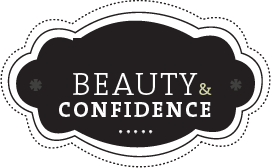Outsmart 5 Hidden Gym Dangers
You go to the gym to get healthier. But what you may not know is that there’s also a chance of getting sick or injured. The reality is that many hidden dangers exist in health clubs, from cold- and flu-causing viruses to risky equipment.
Fortunately, if you know the warning signs -- and how to respond -- you’ll significantly decrease your chances of health woes. Here, then, are the five worries to watch. Use these tips, and the only thing you’ll bring home from the gym is a better physique.
Gym Danger No. 1: Germs
Reality check: 73 percent of weightlifting equipment at the gym is contaminated with a cold virus, according to a study in the Clinical Journal of Sports Medicine. As if that wasn’t enough, a Journal of Athletic Training study reported that one in three people has a spreadable skin condition, such as athlete’s foot and ringworm.
- Wipe down equipment with disinfectant spray and tissues before and after use.
- Opt for vinyl or plastic gym bags, since bacteria are less apt to attach to these materials.
- Wash your hands often and/or carry antibacterial gel
- Keep your feet covered in the locker room (think: flip-flops) and use a towel as a barrier to avoid exposing your skin to any shared surfaces.
- Bring your own mat and towel (clubs often transport clean and dirty towels in the same bins).
- Cover your face with a tissue should you need to sneeze or cough.
- Cover cuts or abrasions with a bandage.
- Shower as soon as possible and wash sweaty clothes in hot water.
Gym Danger No. 2: Bad form
If your body is misaligned, you risk placing your joints in unhealthy positions. To steer clear of complications like stress fractures, torn cartilage and tendinitis, don’t be afraid to seek help. Consider hiring a qualified trainer to teach you proper form, or flag down the group instructor to give you pointers.
Also remember to warm up before exercising and stretch often. You should also pay attention to your range of motion, keeping your movements controlled and weight low, until you’ve got that exercise down pat.
Gym Danger No. 3: Too-heavy weights
More isn’t always better. At the gym, overdoing it can lead to physical injuries and mental burnout. In very rare cases, extreme overwork can lead to a dangerous condition called rhabdomyolysis, where the muscles break down and release toxins in the bloodstream. (Post-workout, if you’re feeling extremely sore, weak and fatigued; running a fever; and/or have dark-colored or blood-tinted urine, call your doctor.)
To stay safe, listen to your body and be aware of your limits. Also increase your effort gradually; don’t suddenly increase the amount of weight you’re lifting or distance you’re running.
Gym Danger No. 4: Unqualified trainer
Working with a personal trainer can help you learn how to exercise safely -- and reach your goals. Most trainers are professionals with outstanding credentials. But since there aren’t licensing requirements in the industry, virtually anyone -- including those with little experience or education -- can use the title “trainer.”
Before working with an instructor, ask about their certifications and education. Some reputable certifications: those from the American Council on Exercise (ACE), the American College of Sports Medicine (ACSM) and the National Strength and Conditioning Association (NSCA). Specialty disciplines, such as yoga and Pilates, have their own niche certifications, including ones offered by outlets like the Pilates Method Alliance and YogaFit. And all staff, regardless of what they teach, should be certified in CPR/fitness first aid and automated external defibrillator (AED).
Gym danger No. 5: Faulty equipment
Chances are hundreds of other exercisers use the same equipment at the gym -- that’s a lot of wear and tear. If you notice that a machine isn’t working as it should, or something seems amiss, stop and alert the staff immediately. You may also want to check with your health club’s management to see how often those weight machines and treadmills are maintained and assessed.



